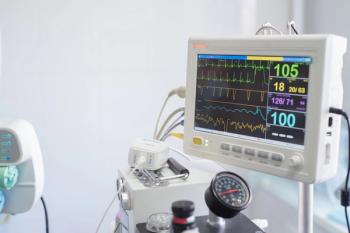
Balancing VTE and bleeding risks in gynecologic cancer surgeries
A comprehensive analysis shows the benefits of thromboprophylaxis often outweigh the bleeding risks during gynecologic cancer procedures, though patient-specific risk factors are crucial for decision-making.
While the use of thromboprophylaxis during gynecologic cancer procedures increases bleeding risk, this may be outweighed by the reduced risk of venous thromboembolism (VTE), according to a study published in the American Journal of Obstetrics & Gynecology.1
Complications of gynecologic cancer surgeries include VTE, deep vein thrombosis (DVT), pulmonary embolism (PE), and major bleeding that may lead to transfusion, reintervention, or death. Data has indicated reduced VTE risk but increased bleeding risk when using pharmacologic thromboprophylaxis during these procedures.2
It is vital to understand baseline risks of VTE and bleeding to quantify the trade-off between reduced VTE risk and increased VTE risk from thromboprophylaxis.1 However, multiple factors influence baseline VTE risk in patients.
Investigators conducted a study to estimate procedure-specific risks of VTE and major bleeding during gynecologic cancer surgeries. Observational studies performing a gynecologic cancer procedure in at least 50 adults were included in the analysis.
Additional eligibility criteria included reporting the exact procedure and an absolute risk for at least 1 outcome of interest. These outcomes included fatal PE, symptomatic PE, symptomatic VTE, symptomatic DVT, fatal bleeding, bleeding causing transfusion, bleeding needing intervention, and postoperative hemoglobin under 70 g/L.
Studies published between January 1, 2000, and November 25, 2020, were identified through comprehensive searches of the MEDLINE, Embase, Web of Science, and Google Scholar databases. Randomized trials evaluating the impact of prophylaxis on VTE and bleeding risks were identified through separate searches.
Title, abstract, and full-text screening were performed by 2 trained screeners, with at least 1 being a gynecologic surgeon during full-text screening. During the first phase of data extraction, data related to procedure characteristics was extracted. During the second phase, patient characteristics and outcome data was extracted.
Symptomatic VTE incidence and major bleeding at day 28 after surgery were reported as primary outcomes. Bleeding was categorized based on requiring reintervention, leading to transfusion, or leading to postoperative hemoglobin under 70 g/L.
VTE categories included symptomatic PE, symptomatic DVT, and both in the same patient. Risks were stratified by procedure and by approach.
There were 188 studies encompassing 398,167 patients and 37 gynecologic cancer surgeries included in the final analysis. Patients were aged a median 62 years when receiving total hysterectomy, 48 years for radical hysterectomy, 31 years for trachelectomy, 61 years for ovarian cancer surgery, and 55 years for pelvic exenteration.
In the studies reporting thromboprophylaxis use, laparoscopic total hysterectomy and pelvic exenteration had the longest duration of use, both with a median of 21 days. The shortest duration was reported for ovarian cancer surgery and open radical hysterectomy with lymphadenectomy, both with a median of 8 days.
Risks of VTE, bleeding requiring intervention, bleeding causing transfusion, and bleeding leading to hemoglobin below 70 g/L were established for 37, 29, 34, and 2 procedures, respectively. For VTE, the median risk was under 1% in 13 procedures, 1% to 2% in 11, and over 2% in 13.
Bleeding requiring reintervention had a median risk under 1% in 22 procedures and 1% to 2% in 24. Bleeding causing transfusion had median risk under 2% in 15 procedures, 2% to 4% in 5, and over 4% in 14.
The lowest median VTE risk of 0.1% was reported for cervical conization, while the highest of 11.1% was reported for open pelvic exenteration. For bleeding requiring intervention, the lowest median risk was under 0.1% for interval surgery for ovarian cancer and the highest was 1.3% for laparoscopic radical hysterectomy with lymphadenectomy.
For bleeding leading to transfusion, the lowest median risk of 0.9% was reported for robotic radical hysterectomy with lymphadenectomy while the highest of 32.9% was reported for open primary surgery for ovarian cancer.
The risk of symptomatic VTE was 2.9% for ovarian cancer surgery when performed minimally invasively vs 7.2% in an open approach. In comparison, open surgery for ovarian cancer had a 1.2% risk of bleeding requiring intervention. A minimally invasive approach was linked to a 3.2% risk of bleeding requiring transfusion vs 11.9% for the open approach.
These results indicated varying risks of VTE and bleeding across procedures. While evidence indicated more benefit than harm from VTE prevention, investigators noted the decision to use thromboprophylaxis should depend on individual risk prediction.
Reference
- Lavikainen LI, Guyatt GH, Luomaranta AL, et al. Risk of thrombosis and bleeding in gynecologic cancer surgery: systematic review and meta-analysis. American Journal of Obstetrics & Gynecology. 2024;230(4):403-416. doi:10.1016/j.ajog.2023.10.006
- Marcucci M, Etxeandia-Ikobaltzeta I, Yang S, et al. Benefits and harms of direct oral anticoagulation and low molecular weight heparin for thromboprophylaxis in patients undergoing non-cardiac surgery: systematic review and network meta-analysis of randomised trials. BMJ. 2022;376:e066785. doi:10.1136/bmj-2021-066785
Newsletter
Get the latest clinical updates, case studies, and expert commentary in obstetric and gynecologic care. Sign up now to stay informed.










